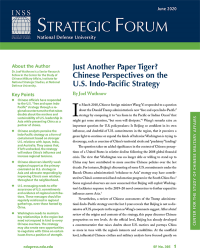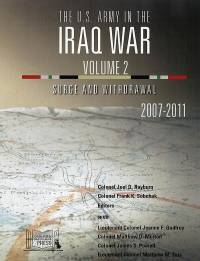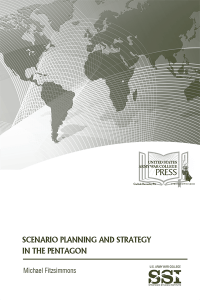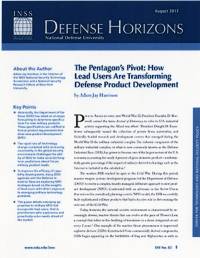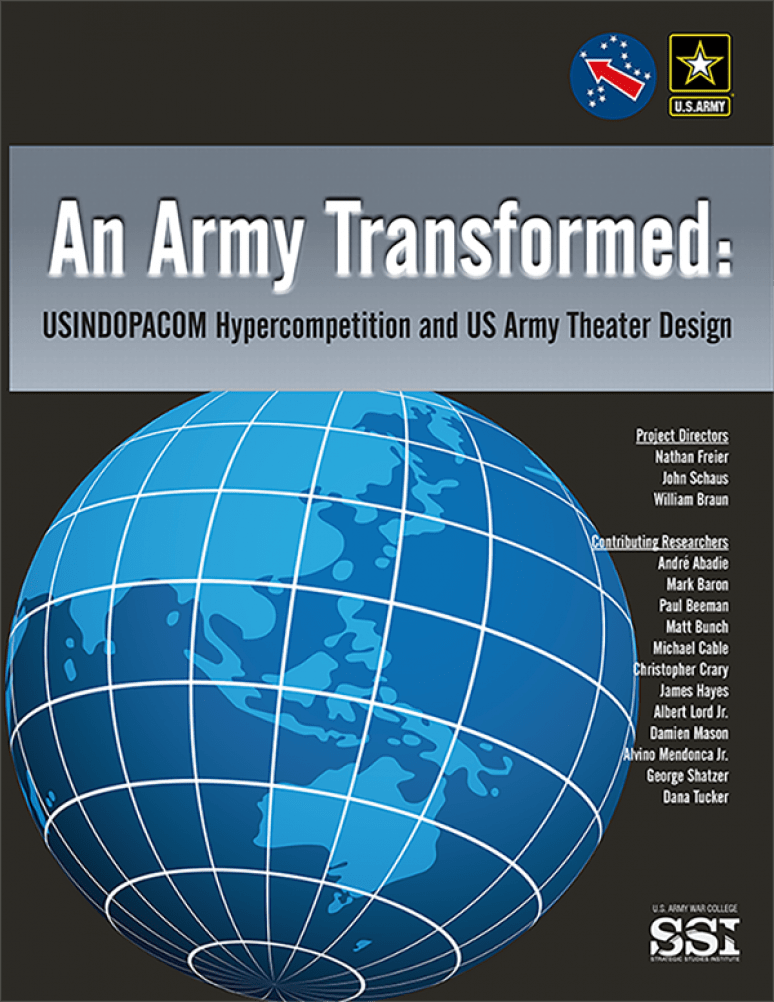
The United States faces a hypercompetitive geopolitical landscape in the Indo-Pacific region, arguably the most consequential theater for US national interests over the coming decades. Although the United States has created exquisite military capabilities to counter insurgencies and fight terrorists, rivals like China have developed a whole-of-government toolkit focused on expanding their span of control and freedom of action, separating the United States from its allies, and deterring US leaders from greater engagement in East Asia.
China is actively transforming its military forces, with an eye toward defeating the United States in the event of armed hostilities. The People’s Republic of China (PRC) is also creatively employing its military and paramilitary assets strategically to outmaneuver the United States and partners in meaningful gray zone approaches. The PRC enjoys strategic depth and increasingly operates on internal or heavily protected lines of communication while demonstrating the ability to threaten American interests with a variety of multi-domain capabilities and forces.
Meeting this challenge will require joint transformation to a more hypercompetitive theater design. Army adoption of the four transformational roles of grid, enabler, multi-domain warfighter, and capability and capacity generator will be essential to realizing this more hypercompetitive Joint theater approach.
Foreword xi
Executive Summary xiii
Hypercompetition, a Pacing Threat, and a Priority Theater xiii
Lost Initiative and an Imperative for Transformational Change xiv
Principal Finding: The Joint Force Is Out of Position for Hypercompetition xiv
Principal Recommendation: The Army Needs to Adopt Four Transformational Roles xv
Unacceptable Risk Absent Transformational Change xvi
Acknowledgments xvii
Chapter 1. Prologue: Divining D’Aveni 1
Why We Are Here: Hypercompetition 1
Describing the Contemporary Competitive Space 1
Strategies for a Hypercompetitive Business Environment 2
A Rough Military Translation of D’Aveni 3
Toward an Adapted Framework for Hypercompetition 5
Chapter 2. Introduction: Why USINDOPACOM Matters 7
Why USINDOPACOM Matters: The Rise of a Credible Near-Peer Rival 8
Erosion of US Reach and Influence 9
Taming the Pacing Rival 11
Chapter 3. Study Origin, Purpose, Methodology, and Scope 13
Origin. 13
Purpose 13
Study Scope: What This Study Does and Does Not Do 14
Study Methodology: Spiral Development According to Three General Stages 15
viii US Army War College Stage 1 (Develop Preliminary Insights, November 2018 to February 2019) 15
Stage 2 (Refine, Test, and Record Insights, February 2018 to May 2019) 16
Stage 3 (Report Findings and Recommendations, May–December 2019) 17
Chapter 4. Analytic Framework 19
Background: One Question, Three Lenses, and “Ready for What” 19
One Question 19
Three Lenses 20
Lens One: Hypercompetition 20
Lens Two: Strategic Purpose and Approach 22
Strategic Purpose: Maintain Favorable Military Balance 23
Strategic Approach: Seize the Initiative and Expand the Competitive Space 24
Lens Three: Elements of Theater Design 25
“Ready for What?” 25
Why This Framework? 26
Chapter 5. Study Assumptions 27
Background: Assumptions as an Essential Starting Point 27
Nine Foundational Assumptions 27
Assumption 1 28
Assumption 2 29
Assumption 3 30
Assumption 4 31
Assumption 5 32
Assumption 6 32
Assumption 7 33
Assumption 8 34
ix US Army War College Assumption 9 35
Chapter 6: The Indo-Pacific Military Problem 37
The Pacer, the Legacy, and the Spoiler 37
The Past and Present as Prologue: The Indo-Pacific’s 2028 Military Problem 38
Contours of a 2028 Joint Military Solution 41
Chapter 7. Strategic Insights 43
Insight 1 43
Insight 2 46
Insight 3 48
Insight 4 49
Insight 5 52
Insight 6 54
Insight 7 56
Chapter 8. Principal Finding and Recommendation 59
Principal Finding: Out of Position for Hypercompetition 59
Principal Recommendation: Four Transformational Roles 60
The Army as the Grid 61
The Army as the Enabler 63
The Army as Multi-Domain Warfighter 64
The Army as Capability and Capacity Generator 66
Where Do We Go from Here? 68
Chapter 9. Findings and Recommendations by Element of Design 69
Strategy and Operational Concepts 71
Finding 1 71
Forces and Capabilities 72
x US Army War College Finding 2. 72
Footprint and Presence 74
Finding 3 74
Authorities, Permissions, and Agreements 78
Finding 4 78
Mission Command Arrangements 84
Finding 5 84
Chapter 10. Conclusion 89
The Risks of Action and Inaction 89
Risk of Action: Moderate to High 90
Escalation 90
Strategic Distraction 90
Institutional Resistance 91
Risk of Inaction: High to Extremely High 91
Limitations of This Report and Areas for Further Study 92
A Final Word 93
Expert Working Group Participants 95
Senior Review Group 97
About the Researchers 99
Project Directors 99
Contributing Researchers 99
National Strategy and Policy Community and Academia, Members of the intelligence community, members of the government and policymakers, Members of Congress, foreign policy analysts, military leaders and strategists, military and Congressional leaders focused on the Indo-Pacific Region, and members of the general public interested in U.S. military relations with China may want a copy of this publication.
Product Details
- Freier, Nathan
- Army War College
- Strategic Studies Institute
- Multi domain Capabilities


